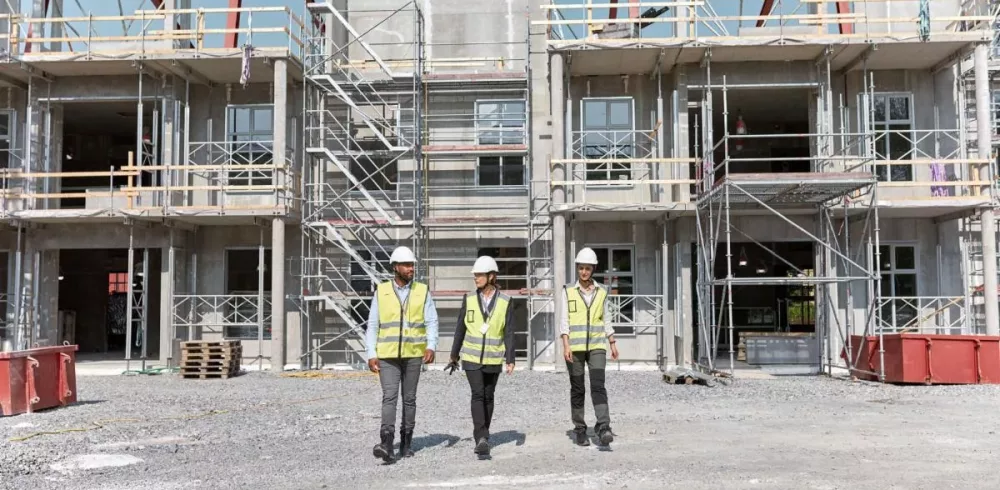Demand For Electrification Is Surging Across The UK Construction Sector, But Grid Capacity Limits Threaten To Slow Net-Zero Transformations.
The UK construction sector has been making significant strides towards electrifying its practices, in a broader effort to adopt carbon-free designs, materials and machinery. But with clean power demands surging at an unprecedented rate, many businesses electric transformation is being put on hold after being struck with critical delays when attempting to secure a connection to the UK power grid.
“Most businesses’ existing grid connection will not be sufficient to deliver the power for net zero operations”, explains Suzanna Lashford, Manager of Business Development, at energy and infrastructure specialist company Vattenfall. “This means one of two things: Securing a new, second grid connection, or upgrading the existing connection to provide more power. Either option places additional loads on the local electrical grid, which is where capacity issues arise.”
The National Grid is warning those looking to secure new connections in England and Wales that they will have to wait in line behind some 600 other projects – collectively compromising of 176GW of energy – with only 64GW of connected capacity available. Jonathan Brearley, Chief Executive of Ofgem, labelled the extensive backlog as “simply not acceptable” in a recent press conference, highlighting that 20% of generation capacity in the transmission queue will have to wait for 10 years before they reach their offered connection dates, while 40% have been offered dates beyond 2030.
Electric journey left static
The construction sector currently accounts for 39 percent of global greenhouse gas emissions, with 28 percent coming from operational use (heating, cooling and lighting), and the remaining 11 percent from embodied emissions (materials and building processes). Grid capacity limitations are thwarting the efforts of companies who are ready to play their part in decarbonising the sector, and delaying millions of pounds of private investment. While at the same time putting the brakes on the UK energy sector, which is not compatible with the UK government’s targets for renewable energy generation.
“If UK wants to meet its targets, wider plans must be initiated to improve capacity and lessen delays. Connections would need to be looked at on a regional basis to enable the UK to analyse where demand is, and place generation close to demand to help stabilise those local areas.” Comments Lashford.
Following outrage from UK businesses, the National Grid’s Electricity System Operator (ESO) has now implemented changes that they claim will shorten delay times, such as making it easier for projects to leave the queue and without penalty. New methods also include introducing a two-stage connection process and tighter queue management, to help remove ‘zombie’ projects (those which are taking up space better used by projects that are ready). But it will be a long time before the results of these changes come into fruition, and many developers are still (and will continue to be) faced with delays that will extend a decade into the future.
For developers who cannot afford longer times scales or significantly higher fees for a grid connection, partnering with an Independent Network Operator (IDNO) can offer an alternative route to secure the required power. These Ofgem regulated businesses work alongside ICP’s to reserve grid capacity for free on behalf of their clients, and contribute to the costs of designing and building an electrical network through an Asset Adoption Value (AAV) payment, which can significantly reduce the developer’s total capital cost.
“AAV payments to discount capital expenditure are not possible through a DNO, they are entirely unique to IDNOs. Vattenfall IDNO has recently taken on a partnership to power a new 46-acre food park in Norfolk with an upgraded grid connection and a new 132kV substation to provide 30MW of import capacity and 50MW of export. For this client, the AAV was integral to financing the £4.5M project and offering a return on investment.”, says Lashford.
Vattenfall will be hosting a webinar tailored to construction companies and their consultants on the 5th of July at 11am, discussing the topic of ‘Cost effective grid connections for the construction sector’. The session will present solutions to help fast-track grid connections, and explain the benefits of and partnering with an IDNO and AAV payments.
Manufacturing & Engineering Magazine | The Home of Manufacturing Industry News















